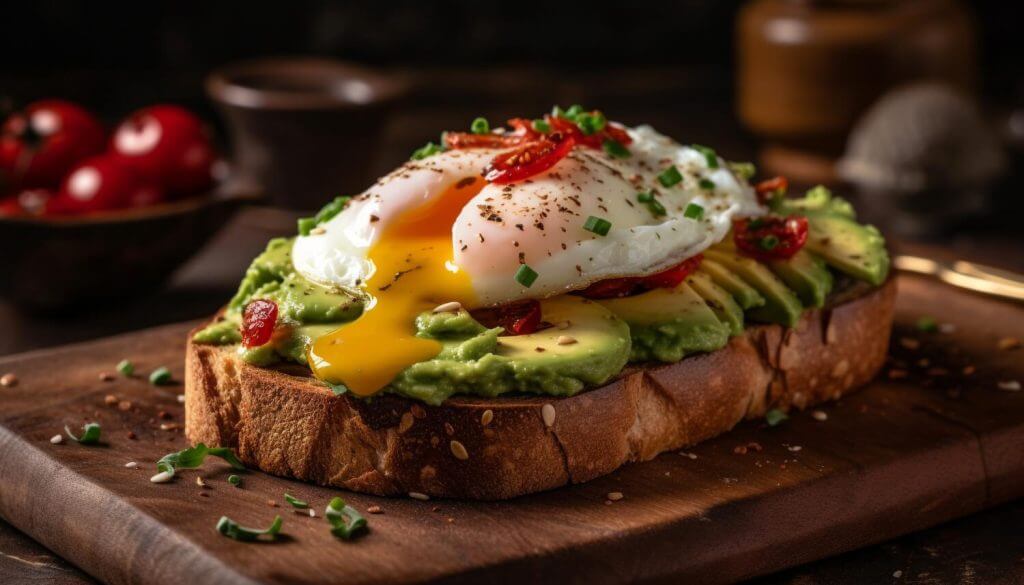Eggs Benedict is an American breakfast classic that appeared in food culture in the late 19th century. This dish is made with cooked ham and poached eggs smothered in hollandaise sauce and served on a buttered English muffin piece. There are several anecdotes surrounding the name of this special dish, but one of the most accepted theories is that it was made famous by a gentleman named Mr Benedict who ordered it in a New York hotel.
Eggs Benedict strikes the perfect balance of textures and flavours, as the crispy muffin is made special by the soft, runny yolk and melt-in-the-mouth layers of creamy hollandaise sauce. Over the years, many variations have been created, including versions with spinach, smoked salmon or even sweetbreads. Eggs Benedict is not just a dish, but a versatile dish that can be adapted to personal taste and the ingredients available.
From the detailed techniques of preparation to the exact recipe for the hollandaise sauce, Eggs Benedict is a favourite for weekend brunches, served to all the basic requirements. The hollandaise sauce itself – the mainstay of hollandaise sauce-based dishes – requires a certain degree of technical skill, with the emulsification process being the most important aspect to watch out for. For connoisseurs and lovers of traditional recipes, Eggs Benedict epitomises the luxury of the morning meal and the delicacy of the culinary art.

Story
The history of Eggs Benedict can be divided into two main elements: its origins in the Delmonico’s restaurant in New York, and the evolution of its different versions.
The relationship between New York City and Delmonico’s
The most established history of Eggs Benedict’s origins dates back to New York City in the late 19th century, directly to the Delmonico’s restaurant. Legend has it that around 1860, an American banker named Lemuel Benedict entered Delmonico’s to treat his hangover. He was the first to order the breakfast of refreshing ingredients that later became known as Eggs Benedict. Delmonico’s Chef Charles Ranhofer credits him with refining and popularising the dish.
Eggs Benedict variations
Over the years, many variations of Eggs Benedict have appeared, adapting the dish to changing tastes and culinary trends. The basic recipe, which includes English muffins, hollandaise sauce, baked ham and poached eggs, has seen many adaptations as follows:
- Florentine (with spinach),
- Florentine (with salmon),
- Californian (with avocado).
Each variation takes the basic idea, but adds local flavours or the culinary traditions of the region. The variety of Eggs Benedict has made it an iconic and diverse dish in American breakfasts.
Ingredients
From a simple English muffin to a rich hollandaise sauce, Eggs Benedict is made with a selection of ingredients that work in perfect harmony to create this iconic breakfast.
English muffin and alternatives
The English muffin is the traditional base for Eggs Benedict, with a softly toasted, buttery surface that perfectly holds the eggs and sauce. Alternatives include:
- Gluten-free muffin
- Croissant
- Gluten-free muffin muffins
Bacon and Canadian bacon
Canadian bacon is the traditional choice because it contains less fat than regular bacon and has a more delicate flavour. Bacon pairings can include:
- Traditional bacon
- Traditional bacon
- Traditional bacon bacon may include traditional bacon bacon
Eggs: The importance of poached eggs
The softness of a poached egg is key to Eggs Benedict. For a successful poached egg, it is essential:
- Fresh eggs
- Boiling water enriched with vinegar
Preparing Hollandaise sauce
The silkiness of hollandaise sauce is essential. Ingredients for homemade hollandaise:
- Fresh butter
- Lemon juice
- Egg yolks.
Vegetables and other toppings
Eggs Benedict can be personalised with additional toppings:
- Spinach
- Asparagus
- Avocado
- Tomatoes
And herbs can be added for a tasty garnish:
- Parsley
- Snidling
- Red pepper
These ingredients and toppings make Eggs Benedict perfect, creating a rich and balanced combination of flavours.

Serving suggestions
Eggs Benedict, as a classic breakfast and brunch dish, can be served in a variety of ways to suit all guests’ tastes.
Serving Breakfast and Brunch
Eggs Benedict is often served with fresh and crispy Canadian-style bacon or ham for a luxurious breakfast or a delicious brunch. Poached eggs are the perfect topping for a soft English muffin, both in taste and texture. Fruit and salad can provide a refreshing contrast on your brunch plate, offering colour and balance.
Servings
The rich flavour of Eggs Benedict can be enhanced with roast potatoes or a delicious Eggs Florentine version using sautéed spinach instead of traditional cold cuts. The garnish can be simply parsley or a serving of refreshing fruit salad. Always use a tea towel or paper towel to soak up the grease to keep the plate clean and aesthetically pleasing.
Vegetarian and seafood options
Meat-free choices include quiche, a worthy brunch companion, or crab cakes made with fresh crab and lobster, which offer a sophisticated seafood alternative. Vegan versions can be made without eggs and meat, for example with tofu. These marine ingredients add a special flair..
Serving tips and tricks
Timing and proper techniques are essential for successful Eggs Benedict preparation and serving.
Secrets of the perfect poached egg
Poached eggs are the star of Eggs Benedict. It is important to follow the steps precisely to achieve a soft, yet firm texture.
- Use a strainer. Strain the fresh egg first to get rid of any loose white. This will help you achieve a nicer shape
- Boiling water and vinegar. Make sure the water is hot but not boiling, and add a little vinegar to help solidify the egg white
- Gentle insertion.
- Make a small swirl in the water using a strainer spoon.
- Gently lower the egg into the water, letting it settle in the centre of the swirl.
- Precise timing. The egg should usually be poached for 3-4 minutes, depending on how runny you want your yolk
Timing the dish and serving immediately
Timing the serving of Eggs Benedict is essential to maintain freshness and temperature.
- Order
- Canadian bacon or ham goes into the pan first while the eggs poach
- Prepare the hollandaise sauce just before serving so that it does not set and separate
- Serve immediately.
- Once the eggs are done, gently lift them out with a strainer and drain
- Place on a warm, toasted English muffin, followed by the ham or bacon, and finally the hollandaise sauce
- Serve immediately while the dish is still warm

